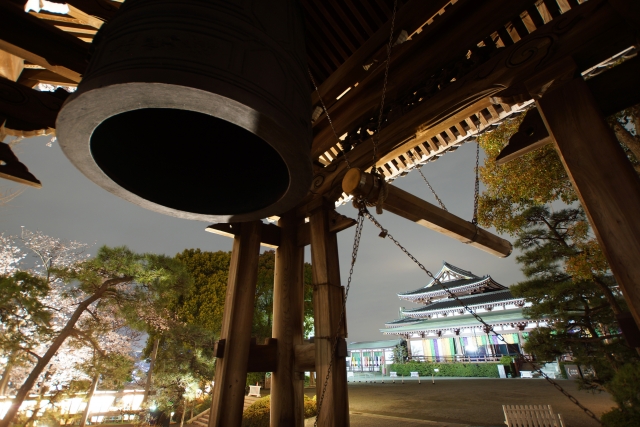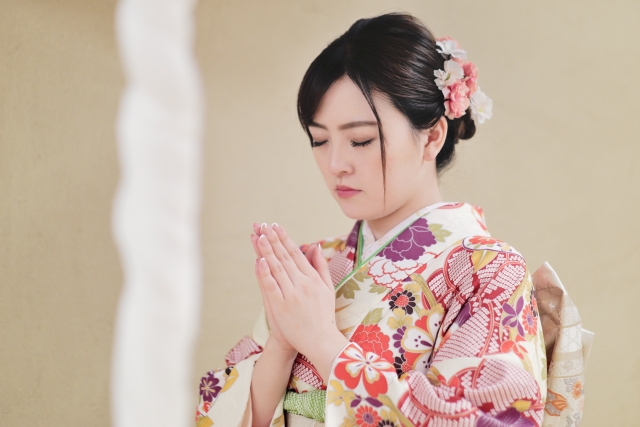日本の最大イベントともいえるお正月ですが、海外でのお祝いの仕方とは異なります。
欧米などでは、クリスマスは家族と一緒にのんびり、年越しは友人とパーティー!というスタイルが一般的なので、日本とは反対のお祝いの仕方だといえます。
今回は、日本のお正月を、英語で説明してみましょう!
英語記事:

「お正月」は英語で何と言う?
お正月は英語でNew Year’s Dayと言います。年末年始は、New Years holidays です。
日本のお正月の過ごし方を英語で説明

日本では、お正月は一年で最も大切な祝日です。年明けの数日間は、多くのお店や会社が閉まり、家族と一緒に過ごします。お正月休みに地元に帰省して家族で過ごしたり、友人と過ごす人が多いです。
In Japan, New Year’s Day is the most important holiday. Many shops and companies close for the first few days of January and people use this time to spend with their families. Many people go back to their hometown to spend the New Year’s holiday with their family or local friends.
覚えておきたい単語:
New Year’s Day お正月 / the first few days of January 三が日 / hometown 地元、故郷
「干支」を英語で言うと?
干支を英語で言うと、Japanese zodiacです。
ちなみに「zodiac sings」だと、星座を指します。
The Japanese zodiac consists of 12 different animals. It originated from the Chinese astrological system divided into 12 blocks based on the Jupiter cycle to count the years.
日本の十二支は12種類の動物で構成されています。これは、中国の占星術が木星の周期に基づいて12ブロックに分け、年を数えることに由来しています。
2023年は卯年ですが、「the Year of the Rabbit」と言います。
2023 is the Year of the Rabbitと教えてあげましょう。
では、英語でそれぞれの干支を訳してみましょう!
子(ネズミ):Rat
丑(ウシ):Ox
寅(トラ):Tiger
卯(ウサギ):Rabbit
辰(リュウ):Dragon
巳(ヘビ):Snake
午(ウマ):Horse
未(ヒツジ):Sheep
申(サル):Monkey
酉(トリ):Rooster
戌(イヌ):Dog
亥(イノシシ):Boar
「門松&しめ飾り」を英語で説明

門松としめ飾りは、日本の伝統的なお正月飾りです。二つとも、家やお店、ホテルの前などに置かれ、年神さまをお迎えします。また、厄を払うとも信じられています。
Kadomatsu and shimekazari are traditional Japanese ornaments for New Year’s Day. They are placed in pairs in front of houses, shops, hotels, and others to welcome Toshigami-sama, a deity of harvest and ancestral spirits. Also, it’s believed to ward off evil spirits.
覚えておきたい単語:
traditional Japanese ornaments for New Year’s Day お正月飾り / a deity of harvest and ancestral spirits 年神様 / ward off evil spirits 厄を祓う
「年越しそば」を英語で説明

日本では、大晦日にそばを食べ、これを年越しそばといいます。この習慣のはじまりは江戸時代に遡り、そばは長寿を表し、簡単にかみ切れることから、悪い運を断ち切って新年を迎えるという意味が込められています。
Japanese people love to eat Soba on New Year’s Eve. It is called Toshikoshi Soba, which means eating soba as you welcome the new year. This custom dates back to the Edo period when people started to eat soba when they usher in the new year. Soba noodles symbolize long life and the soft noodles that are easy to chew, help you get rid of bad luck in the previous year so that it won’t haunt you for the next year!
覚えておきたい単語:
New Year’s Eve 大晦日 / dates back to the Edo period 江戸時代に遡る / symbolize long life 長寿を象徴する / chew 噛む / get rid of bad luck 悪運を断ち切る
「おせち」を英語で説明

おせちはお正月の期間のみ楽しめる特別な料理です。海老や伊達巻などの伝統的な食べ物が重箱に詰められています。一品ずつ、少しずつ家族や親せきと一緒に食べ、すべての種類を楽しめるようになっています。おせちに詰められている具材には、それぞれ意味があります。
Osechi is a special cuisine that you can enjoy only during the New Year’s holiday in Japan. It consists of traditional Japanese dishes like shrimps and datemaki. They are all packed in a jubako, a traditional lacquer box that looks like a lunch box. Japanese people enjoy sharing it with their families or relatives and each dish is generally served in a small portion so that you can enjoy all of the different ones. This is important as each part has a different meaning.
覚えておきたい単語:
being packed in a traditional lacquer box 重箱に詰められている / relatives 親戚/ a small portion 少量
おせちの具材と意味を英語で説明しよう
- Ebi / Shrimp: wish for longevity (海老:長寿)
- Datemaki/ Rolled sweet omelet: wish to improve knowledge (伊達巻:学力向上)
- Kazunoko/ Herring roe: pray for the prosperity of descendants (数の子:子孫繁栄)
- Kuromame/ Sweet black beans: encourage work and academic achievement (黒豆:まめに働く)
- Kuri-kinton/ Sweet mashed potato with chestnuts: money, luck (栗きんとん:金運)
「除夜の鐘」を英語で説明

除夜の鐘とは、全国のお寺で行われる伝統的な行事です。大きな鐘を108回鳴らし、これは人々の煩悩の数を表します。除夜の鐘は、0時をはさんだ23時から1時の間に鳴らされます。実際にお寺に出向く人もいますが、テレビで放映されるので、寒い中出かけることなく、家で楽しむこともできます。
Joya no Kane is a traditional event that is carried out at some Buddhist temples around Japan. They ring a giant bell, which is usually hung outside, 108 times in total. This number represents the number of worldly desires of humans. They start to ring the bell before New Year, they ring the bell between 11 pm to 1 am. Many people enjoy watching the annual event in person and come to the temple at night. You can also enjoy the event on TV which allows you to feel the sacred atmosphere without going out in the freezing cold weather.
覚えておきたい単語:
ring a giant bell 大きな鐘を鳴らす/ 108 times 108回/ worldly desires of humans 人間の煩悩
「初日の出」を英語で説明

年のはじめは、初日の出を見て、最高のスタートを切りましょう。中には初日の出のためにオープンしている展望台がありますが、大人気のためチケットの予約が難しい場合が多いです。
そのため、多くの人がハイキングに出かけ、山の頂上で初日の出を見ています。
The first day of the new year is best started by viewing the new year’s first sunrise, hatsuhinode and many people stay up to do so. Some observatories open for this tradition, but as these are often very popular, it is difficult to get one of the limited tickets. Other people prefer to go hiking and watch the sunrise from the top of the mountain.
覚えておきたい単語:
the new year’s first sunrise 初日の出/ observatories 展望台/ the top of the mountain 山頂
「初詣」を英語で説明

初詣は正月休みの中で最も大切な行事のひとつです。その年、初めて神社やお寺にお参りに行く日で、一年の無事を祈ります。お参りに行く日にちなどは、具体的に決まっていませんが、1月1日から3日にかけて初詣に出かける人が多いようです。毎年元旦にはたくさんの人が集まるので、混雑を避けて日にちをずらす人もいます。
Hatsumode is one of the most important events during the New Year’s holiday in Japan. It is your first shrine/ temple visit of the new year to make a wish and pray for the good fortune of the year. There is no specific rule or date which stipulates when to visit shrines or temples, but typically it is done between January 1-3. Some people choose New Year’s Day, while others wait a couple of days to avoid the large crowds.
覚えておきたい単語:
first shrine/ temple visit of the new year 初詣/ make a wish 願い事をする/ pray for the good fortune of the year 一年の幸運を祈る
▼あわせて読みたい
「お年玉」を英語で説明

お年玉は日本の子どもたちが最も楽しみにしているもので、大人が子どもや親せきの子どもに、お金をポチ袋と呼ばれる、小さな封筒に入れて渡す習慣です。新年のお祝いの贈り物であり、子供たちはお金の使い道を考え、お金の大切さを学びます。
Otoshidama is something that the Japanese children are most excited about: it is the traditional custom that adults give out some money to their children or relatives’ children in a small envelope called pochi bukuro. It is considered as a gift of cash that children receive as a celebration of the new year. It is also meant to give children some awareness about money by thinking about how to spend the money.
覚えておきたい単語:
give out some money お金を配る / a small envelope 小さな封筒/ a celebration of the new year 新年のお祝い / give children some awareness 子どもに気づきを与える
「年賀状」を英語で説明
年賀状は英語でNew Year’s cardと言います。
In Japan, people usually send out New Year’s cards rather than Christmas cards.
日本では、一般的にクリスマスカードより年賀状を送ります。
海外では、クリスマスカードを送ることが一般的で、その中に「Wishing you a happy new year(良いお年を)」と年末年始の挨拶を加えることが多いです。
「福袋」を英語で説明

新年はお得なセールが多く開催され、店頭では福袋が売られます。福袋はいろいろな商品が詰まったもので、開けるまで中身を見ることができません。洋服、化粧品、日用品店など、様々なお店で売られています。福袋のためにつくられた限定商品や、人気商品が入っていることも多いです。お得な値段で売られており、値段の2倍ほど価値のあるものが入っていることもあります。
New Year is a perfect time to go shopping in Japan as many shops hold big sales. You will see many shops selling lucky bags. Lucky bags, fukubukuro in Japanese, are special bags that are packed with various kinds of products and items. It can be found at any kind of shop including clothing, cosmetics, and even grocery stores. You can’t check inside the bags until you finally open them, but it usually includes popular items or some limited editions especially made for Fukubukuro. The bags are often great value for money, sometimes you will receive products with a value twice the amount you spent.
覚えておきたい単語:
hold big sales 大きなセールを開催する/ lucky bags 福袋/ clothing store 洋服店/ cosmetics store 化粧品店/ grocery store 日用品店/ great value for money お得
動画で発音をチェック!
この記事と一緒に、動画もぜひご覧ください!
実際に話すときは、どんな風になるのでしょうか?アメリカ出身、英語ネイティブのタイ先生の発音を聞いてみましょう。
英語を活かして外国人ゲストをおもてなし!

- 日本の魅力を外国人に紹介したい
- 英語や語学を活かした仕事がしたい
- 人を喜ばせることが好き
そんな方にぴったりな仕事が通訳案内士やツアーガイドのお仕事です。
通訳案内士(ツアーガイド)は、一緒に街を歩いて、地域の歴史や文化をお話しながら、外国人ゲスト一人一人の旅が素敵なものになるようお手伝いします。
ガイドの印象によって、日本の印象が決まると言っても過言ではありません。
人を楽しませることが好きで、日本の魅力を世界に伝えたい!という情熱をお持ちの方は、ツアーガイドを目指しませんか?

JapanWonderGuide(JWG)は「日本のガイドの質を世界一に」をスローガンに掲げるガイドコミュニティです。
2020年から活動を開始し、全国通訳案内士等を中心に、現在は、3,800名を超えるコミュニティとなっております。
JWGの有料会員(Knottist, ノッティスト)にご登録いただくと、月額1,000円(税込1,100円)で、
ガイディングやビジネスに活きる知識・スキルが身につく研修動画、E-Learningが見放題!有料コンテンツを無料でご視聴いただけます。
そのほか、人気観光施設の最新情報や裏話をお届けするJWG Live!の見逃し配信、各研修の割引などをご利用いただけます。
さらに、有料、無料会員ともに研修やイベント情報など、ガイドに役立つ内容がたっぷり詰まったメルマガを月に2回お届けします。
また、ガイド仲間を見つけ、交流できるFacebookグループにもご招待!情報交換の場としてお使いください。
【JWG会員でできること】
| Knottist Free | Knottist | Knottist+ | |
| 料金 | 無料 | 月額1,000円 (税込1,100円) | 年間14,000円※ (税込15,400円) |
| 期間 | 無期限 | 毎月自動更新 | 2026年8月31日まで |
| ①メンバー限定Facebookグループご招待 | ○ | ○ | ○ |
| ②メンバー向けメルマガ受信 | ○ | ○ | ○ |
| ③JWG Live!見逃し配信 | △ | ○ | ○ |
| ④JWG主催研修割引 | – | ○ | ○ |
| ⑤JWG交流会へご招待 | 有料 | 無料 | 無料 |
| ⑥通訳案内研修 | – (3,500円) | 無料 | 無料 |
| ⑦JWG動画配信 | 有料 | 無料 | 無料 |
| ⑧通訳ガイド保険 | – | – | ○ |
※Knottist+の会費は加入月によって変動します
JWGでは、ガイドのスキルアップを目指す方や、ガイドに挑戦したい新人ガイドさん、
ガイドに興味のある方を全力サポートいたします!
「学校の合間に」「週末だけ」
JapanWonderGuideと一緒に、「ツアーガイド」の世界の扉を開きませんか?

日本文化を英語で説明しようシリーズ
そのほか、海外からのゲストをご案内する際に役立つ「英語で説明してみよう」シリーズを書いています。ぜひこちらもご覧ください!













コメント